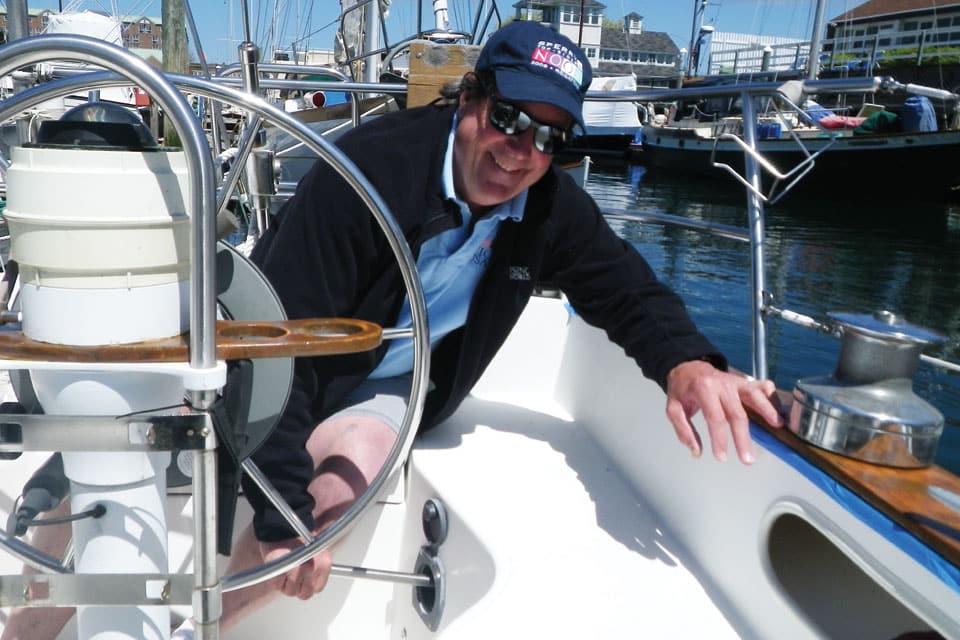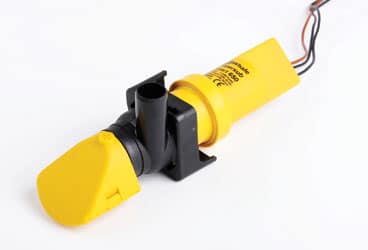
It began with the best of intentions, but doesn’t it always? When my family bought our 1978 Sabre 10 years ago, the surveyor recommended we install an automatic bilge pump to augment the manual Whale Gusher mounted in the cockpit. But this wasn’t as easy as it sounds. The designer of the Sabre 34 allowed for only a very shallow bilge, with no real sump to collect the water, should any accumulate beneath the floorboards. Which it does. Being a boat, water somehow finds its way in through the cockpit locker lids, down the mast, past partially closed ports, and by means of any number of other vexing ways. Over time, I found that the manual pump worked quite well, and what that pump couldn’t clear, I daubed up with a big sponge and bucket in a constant battle to keep the keel bolts dry.
Still, though the boat had survived for three decades without one, it always did seem as though there should be an automatic electric pump just in case. The question, though, was how? Most of the pumps rated high enough to move a significant amount of water were too tall to fit under the floor. But then one day on a new boat, I spotted a very cool-looking horizontal, tube-shaped pump with internal sensors, rather than a float switch, to detect water in the bilge.
Problem solved, I thought, as I headed home. Or not.

Back in Newport, I purchased a Whale Super Sub 650, along with a seemingly overpriced three-way bilge-pump switch, a T to tap into my sink drain, eight feet of hose, three hose clamps, and various wiring doodads. After 10 years of anticipation, I was eager to get started and chose a Thursday night after work to break out the hacksaw. Now I’m no dummy; I first closed the sink drain’s through-hull, then went on deck and measured from the toerail to the water. Back below, I eyeballed tolerances so as not to make any cuts below the waterline.
Though the area under the sink is cramped, it took just a minute to slice my way through the thick-walled white pipe in front of me. And even less time for seawater to begin pouring in, the closed seacock be damned.
It was a precious sailing moment. Perhaps you’ve had one?
Faster than I could spit out a four-letter word, I realized that a.) the seacock leaked; b.) I was just enough off with my eyeball measurement to have cut the hose at the precise waterline; and c.) the nearest store with new hose would close mere minutes before I could get there. With each rock of the boat, more water gurgled from the severed pipe, sounding as though the gods were laughing at me.
Heat gun in hand, I softened the upper portion of the drainpipe and shoved the T-fitting into place. Heating the lower piece at first prove fruitless, filled as it was with salt water still in the low 40s F. In desperation, I managed to bend the stiff hose enough to splash water everywhere, frantically heated the empty tube, and with sheer determination got enough of the T’s barb in deep enough to hold a hose clamp. Once I’d attached my new eight feet of hose and raised its other end high into the cabinet, the inflow of water mercifully stopped.
The nearly filled bilge was quickly emptied with just a few strokes of the manual pump, which raises the question, why did I need the new one, anyway?
This article first appeared in the July 2013 issue of Cruising World. To read more from Editor Mark Pillsbury, click here.








